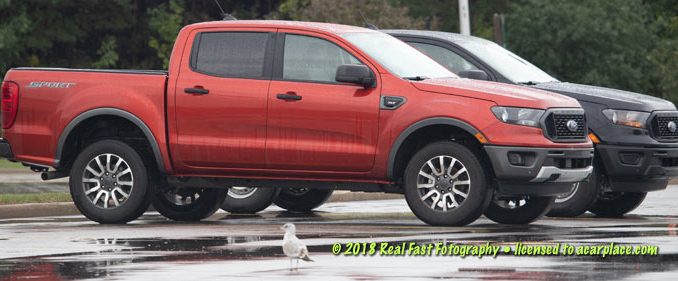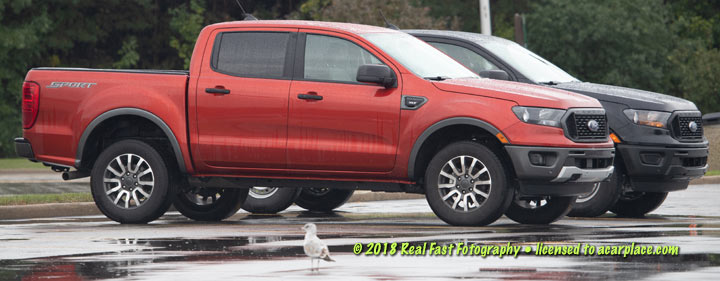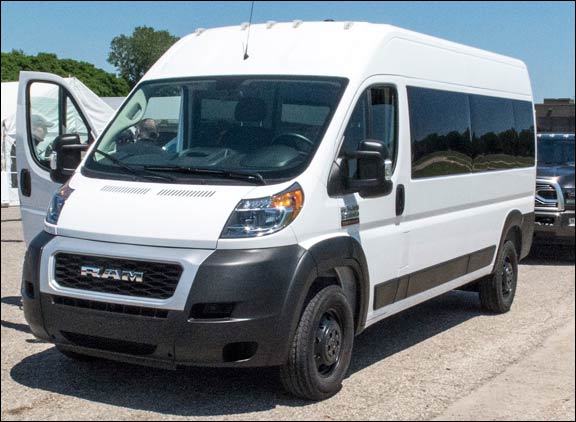
Sales in the United States carry a bit of worry in the details, even if the bottom line is okay—especially given the frigid weather in much of the country during the end of January.
It‘s hard to tell how General Motors is doing, because they’re only reporting sales quarterly now (Ford is moving to join them, probably to reduce the frequency of “hey, don’t they sell anything but pickups?” stories). Automotive News, though, estimated that their sales dropped by 7%, compared against January 2018, which was also estimated. That’s still 185,000 or so sales, which keeps GM comfortably in first place in the USA (a position they’d been predicted to lose, before Toyota sales fell off a cliff).

Over at Ford, which is, yes, still producing monthly sales reports, the picture was brighter, with crossovers and trucks pushing volume up by 7%—yes, Ford gained roughly what GM lost, coming in at #2 with around 172,000 sales. The new Ranger pickup looks like a major hit, though the reasons aren’t apparent (aside from gas mileage, where it easily bests the Chevy Colorado and will almost certainly beat the off-road-focused Jeep Gladiator).
Toyota is still #3 in the USA, and they matched GM’s fall, dropping by 7%, to 156,021 sale. Scion is completely gone, with none of the “three or four sales per month” we get from other companies when they drop a model or brand; but that’s just because they attribute sales of old Scions to Toyota now. Lexus stayed roughly steady, with a 3% drop to 17,420 sales, but the Toyota brand took a 7% fall. While Toyota has two of the most popular crossovers in America, they’ve long relied on sales of the Corolla and Camry; while both are far better cars now than they were for many years, Americans have turned to crossovers with increasing frequency.
Fiat Chrysler is an interesting story, with Rams flying off the lots—a full 24% gain, with both pickups and vans doing well—but every other brand falling, roughly in order of volume. Jeep fell by 2% and Dodge by 1%, but then the smaller players hurt worse—Chrysler falling by 15%, Alfa Romeo by 30%, and Fiat by a stunning 39%, despite free turbo engines on all the 500s. Fiat has no less than five models for sale, but only managed to sell 751 cars across the entire United States last month. That’s pretty sad. As for Ram, it’s hard to tell whether they had a real gain or a fleet gain; fleet sales at FCA went up to around 24% of the total last month, versus 16% of the total in January 2018. That’s still far better than the fleet-percentage when Fiat first took over the company, ten years back.

The only other two companies to make six-figure sales were Nissan and Honda. Nissan now includes Infiniti (10,302) and Mitsubishi (8,711), but the lion’s share of sales come from Nissan itself (90,439), which was down by a painful 20%. Nissan has, for some time, relied rather heavily on rental and other fleets, and it’s possible they’re working to normalize their brand as they separate from Renault; the resale value of Nissans can’t be helped by the fleet sales and heavy retail discounting.
As for Honda, the company that notoriously avoid fleet sales and discounting alike, with the Accord recording very disappointing sales (like the Camry, despite a successful redesign) has been slapping incentives onto the hoods with reckless abandon (by their own standards). That bought Honda a 1.5% sales gain, to 106,139—mainly on the back of Acura”s amazing 10% gain, to 9,764 sales.
Few car sales reports would be complete without mentioning that most arrogant and marketing-heavy of companies, Tesla, which recently raised energy prices at its charging stations while completely giving up on any pretense of making “entry-level” $30,000 electric cars. Sales were actually quite good for an automaker in its price range, with an estimated 31,900 sold in January—roughly four times its sales in January 2018, thanks partly to a new assembly line. That compares favorably to Audi’s 14,253 sales, Infiniti’s 10,302, Mercedes’ 23,721, Genesis’ 1,224, Jaguar/Land Rover’s 10,463, Acura’s 9,764, BMW’s 18,102, Lincoln’s 7,715, or Alfa Romeo plus Maserati plus Fiat put Chrysler, all combined. Indeed, Tesla managed to outsell Dodge by around four thousand cars, which is impressive. If Tesla can keep it up, they will wrest the luxury-car sales lead from Mercedes and BMW with absolutely no problem (perhaps even meeting Mercedes and BMW combined). Few analysts expect Tesla to be able to keep it up, though, especially with credible electric cars already on sale by Jaguar, and with many other electric cars and crossovers coming from Alfa Romeo, Audi, BMW, Cadillac, Maserati, Volkswagen, and others.

David Zatz has been writing about cars and trucks since the early 1990s, including books on the Dodge Viper, classic Jeeps, and Chrysler minivans. He also writes on organizational development and business at toolpack.com and covers Mac statistics software at macstats.org. David has been quoted by the New York Times, the Daily Telegraph, the Detroit News, and USA Today.

Leave a Reply